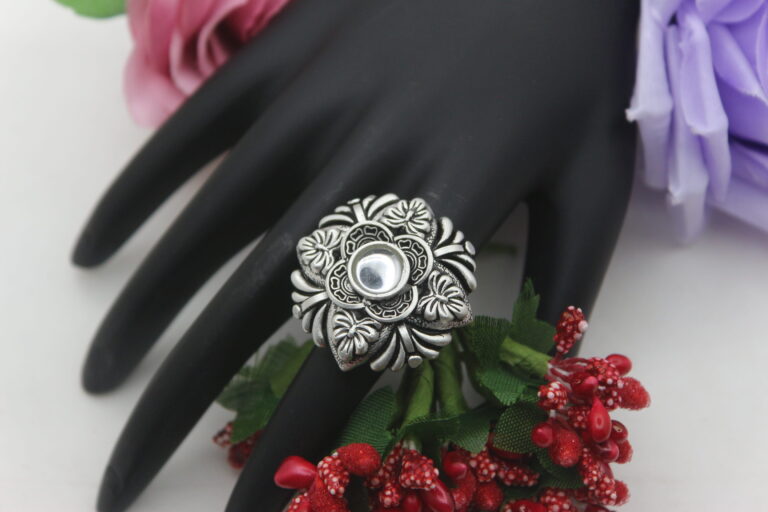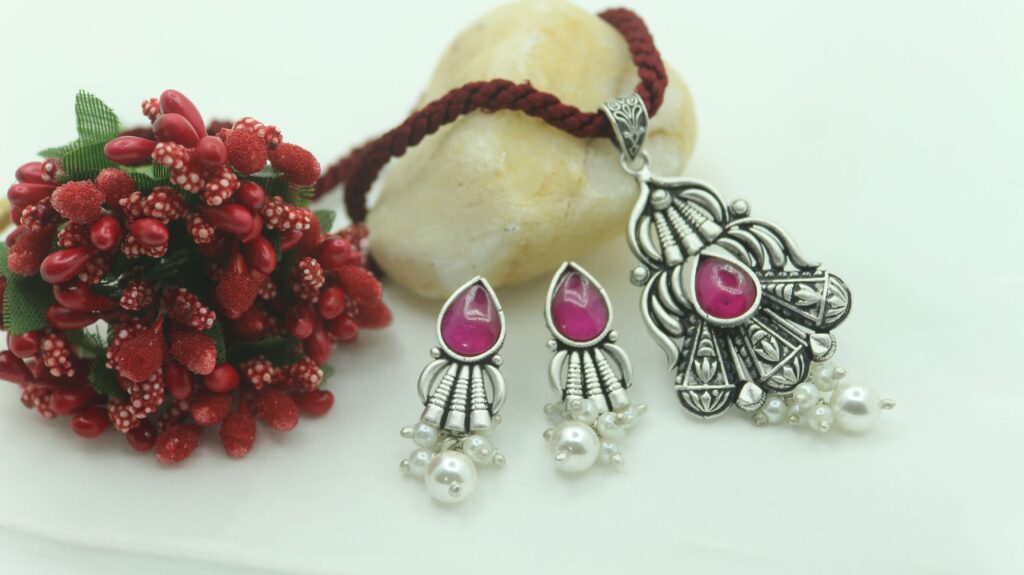Silver jewelry tarnish is beloved for its elegant appearance and timeless appeal, but one common issue that silver owners often encounter is tarnishing. If you’ve noticed your silver jewelry losing its luster and developing a dark, dull coating, you might be wondering why this happens and what you can do about it. This blog will explore the causes of tarnishing, ways to prevent it, and tips on how to restore your jewelry’s shine.
The Science Behind silver jewelry tarnish
Tarnishing is a natural process that affects all silver jewelry over time. The main culprit behind tarnish is a chemical reaction that occurs when silver comes into contact with sulfur-containing substances in the air. When these substances, such as hydrogen sulfide, interact with silver, they cause it to form silver sulfide—a dark, dull compound that coats the surface of the metal. This process is known as oxidation, and it’s responsible for the tarnished appearance of your jewelry.
While silver is a relatively stable metal, it is not completely resistant to oxidation. Pure silver, or fine silver, is less prone to tarnishing because it contains fewer impurities. However, most silver jewelry is made from sterling silver, which is an alloy consisting of 92.5% silver and 7.5% other metals, usually copper. The copper in sterling silver is more reactive than silver, making the alloy more susceptible to tarnishing.

Factors That Accelerate Tarnishing
Several factors can influence how quickly your silver jewelry tarnishes:
- Exposure to Air and Humidity
The primary cause of tarnishing is exposure to air, particularly in environments with high humidity. Moisture in the air accelerates the oxidation process, causing silver to tarnish more quickly. This is why you may notice your silver jewelry tarnish faster during the summer months or if you live in a coastal area. - Contact with Chemicals
Everyday substances like lotions, perfumes, hairsprays, and even certain foods can speed up the tarnishing process. Many personal care products contain chemicals, such as alcohol and chlorine, which can react with silver and cause it to tarnish. Additionally, exposure to household cleaning agents, especially those containing bleach or ammonia, can be particularly damaging to silver jewelry. - Skin Acidity
The natural oils and sweat from your skin can also contribute to tarnishing. Everyone’s skin has a different pH level, and those with more acidic skin may notice their silver jewelry tarnish more quickly. This is because the acids in sweat can react with the silver, leading to the formation of silver sulfide. - Pollution and Environmental Factors
Air pollution, particularly in urban areas, can contain higher levels of sulfur compounds, which can accelerate the tarnishing process. Sulfur dioxide, a common air pollutant, can react with silver to form tarnish even more quickly. - Storage Conditions
How you store your silver jewelry can also impact how quickly it tarnishes. Leaving silver jewelry exposed to air or storing it in a humid environment can lead to faster tarnishing. This is why it’s essential to store your silver pieces properly when they’re not being worn.
Preventing Tarnish: Tips and Tricks in 5 Steps
While tarnishing is inevitable, there are several steps you can take to slow down the process and keep your silver jewelry looking its best:
- Store Properly
Store your silver jewelry in a cool, dry place, ideally in an airtight container or a jewelry box lined with anti-tarnish fabric. Anti-tarnish strips or silica gel packets can also help absorb moisture and prevent tarnish. Avoid storing silver jewelry in direct sunlight or in areas with high humidity. - Minimize Contact with Chemicals
To protect your silver jewelry from tarnishing, try to minimize its exposure to chemicals. Always apply lotions, perfumes, and hairsprays before putting on your jewelry, and remove your silver pieces before swimming or cleaning with household products. - Wear It Regularly
Believe it or not, wearing your silver jewelry regularly can actually help prevent tarnish. The natural oils from your skin create a protective barrier that slows down the oxidation process. Just be sure to clean your jewelry regularly to remove any buildup of oils and dirt. - Clean Gently and Regularly
Regular cleaning can help prevent tarnish from forming. Use a soft cloth or a silver polishing cloth to gently wipe down your jewelry after each use. For deeper cleaning, you can use a mild soap and water solution, but avoid using abrasive materials that can scratch the silver. - Avoid Sulfur-Containing Substances
Try to avoid exposing your silver jewelry to sulfur-containing substances, such as certain foods (e.g., eggs, onions, and garlic) and rubber products, as these can accelerate tarnishing.
How to Remove Tarnish
If your silver jewelry has already tarnished, don’t worry—there are several effective methods to restore its shine. One popular home remedy involves using baking soda, salt, and aluminum foil. Simply line a bowl with aluminum foil, add a tablespoon of baking soda and salt, and pour in boiling water. Place your tarnished jewelry in the solution, ensuring it touches the foil, and let it sit for a few minutes. The tarnish will transfer to the foil, leaving your jewelry shiny and clean.
Alternatively, you can use commercial silver cleaners or polishing cloths designed specifically for silver. These products are formulated to remove tarnish without damaging the metal.
Embrace the Patina
While some people prefer their silver jewelry to be bright and shiny, others appreciate the natural patina that develops over time. Patina refers to the darker, aged appearance that silver takes on as it tarnishes. This can add character and depth to your jewelry, highlighting intricate details and giving it a vintage look.
To find more about “Why does my silver jewelry tarnish?” click below link.
https://chhogada.com/how-to-clean-silver-anklet/
https://chhogada.com/tarnished-silver-jewelry-checkout-quick-7-steps-home-remedies/
https://chhogada.com/how-to-take-good-care-of-silver-jewellery/
